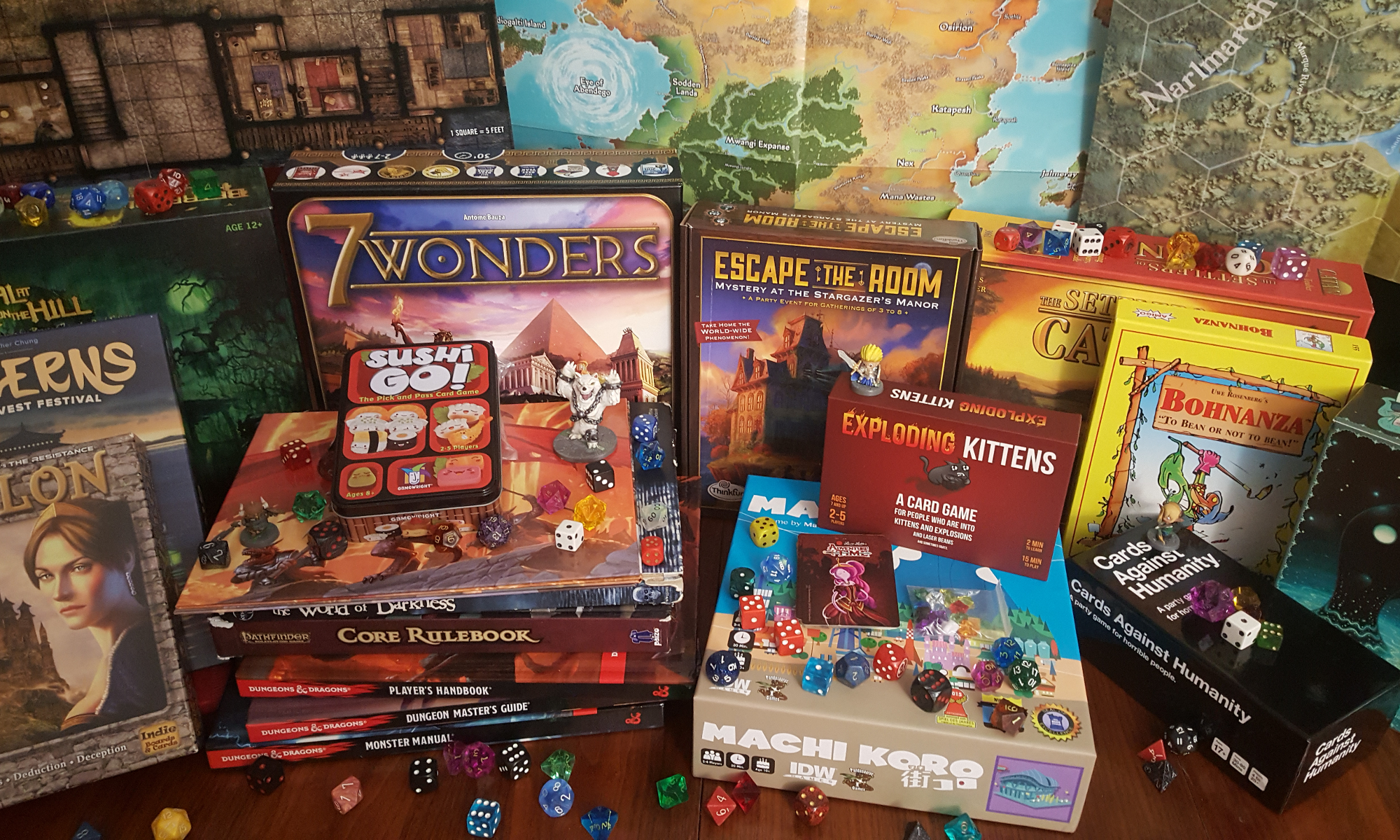Today’s episode of Save Vs. Rant is about bad house rules – non-canonical rules introduced to a game by a well-meaning group that end up making the game worse.
What makes a rule bad? What causes part of a game to fail despite the best laid plans of designers? While the idea of “bad” is at least partially subjective, there are design features that are generally considered to be objectively bad design. Some of the most common examples of bad design include:
Turning an Advantage Into a Disadvantage: If something is meant to be an advantage without an attached disadvantage, the rules should reflect this. In Dungeons and Dragons, a character having high strength, for example, is supposed to be a good thing. A DM would be subverting this principle if they added a house rule that a character with high strength “doesn’t know their own strength” and routinely breaks fragile objects just by holding them.
In the original World of Darkness game line, the rules for a regular dice pool were, “Assemble a dice pool based on how good your attributes are; have the Storyteller select a target number based on how hard the task is; each die that hits that target number is a success; if you have no successes and roll 1 on one of the dice, you suffer a dramatic failure.” This sounds like a decent rule, until you consider the fact that, with higher target numbers, the mathematical consequence is that more skillful characters have a higher chance of a dramatic failure*. This makes having a larger dice pool worse if the task is sufficiently difficult.
Turning a Disadvantage Into an Advantage: A counterpoint to the last one, disadvantages that are actually advantages can greatly damage the integrity of an RPG. One of the most common ways this is done is by allowing “flaws” to be taken by characters. If a character can take a “flaw” that they can work around – or, more insidiously, that does not effect their chose build at all – then they receive the benefits of that “flaw” without any of the drawbacks. D&D’s Unearthed Arcana introduced traits that gave a minor benefit in return for a less minor drawback; when it discusses players designing their own traits, it points out that traits that harm a character’s melee combat or magic are irrelevant to characters built around ignoring that part of the game, and are largely to be avoided.
In GURPS, characters are built using a point-based system. While, for the most part, an effort is made to make any character flaw relevant to any character that chooses to take it, some flaws are just things a character can be built to overlook. While having a flaw that makes you act last in combat sounds bad, for instance, if your character doesn’t capitalize on going first anyway, that may not matter. Being ugly is irrelevant if the party has a face. Being magically inept is harmless to a character that doesn’t use mage.
Note: Sometimes, an advantage is intended to have a drawback, or a disadvantage a sort of consolation prize. In the New World of Darkness, for example, nearly every Supernatural Advantage attribute (Blood Potency, Primal Urge, Wyrd, etc) also entails several drawbacks as a design decision. Likewise, some disadvantages – a Mage being addicted to drugs, for example – have consolations that go with them (that same Mage being able to summon the inner Demon of his addiction). This, as a narrative design choice, can be a good thing.
Rules That Add Complexity: Needlessly adding complexity to a game is one of the surest ways to take the fun out of the game. One way in which games tend to do this is by breaking down the concept of time in what are seen as logical or novel ways that, ultimately, damage the playability of the game. In some games, an effort is made to ensure that characters act “simultaneously,” tracking movement and action by the second or resolving actions based on byzantine rules for determining what happens first. This is almost always a bad thing.
In some editions of GURPS, the action is tracked for each second, and the GM needs to keep track of which second a given action takes place on, which can be a bookkeeping nightmare with lots of complex action. The Dr. Who RPG, as a good counterpoint, determines who goes first based on what they are doing. Talkers go first, then runners, then doers and finally attackers. This is a fairly simple (if slightly unintuitive) system that, above all, enforces the feel of a Dr. Who story, where physical confrontations are a last resort.
Other common sources of unnecessary complexity include bookkeeping for encumbrance (a necessary evil mostly in survival based games or games where a theme is limited resources, otherwise typically beneath notice), and rules for wear and tear on equipment. Abilities that last variable amounts of time and / or have wildly different numbers of uses or timing on recharging can be a serious problem. In D&D, effects frequently last a number of rounds, a number of minutes (10 rounds each) or even a number of hours (600 rounds). This can get complicated. The World of Darkness tried to alleviate this by causing most persistent effects that last longer than a few seconds to last for one abstract “scene.”
Rules That Give a False Choice: There was an extremely contentious thread on White Wolf’s New World of Darkness message board about the interactions between armor and called shots. Armor, in NWoD, reduces an attack’s dice pool. Called shots, likewise, reduce the dice pool. Per the rules, a called shot ignores armor that isn’t on the location and a called shot to the head is a -3 penalty. Therefore, if someone is wearing armor that doesn’t cover their head with an equipment modifier of +3 or greater, the attacker is better off attacking the head, since that presumably entails other benefits beyond just injuring the target. The contention was, however, that this created a false choice where the player could do the wrong thing, but why would they?
More often, false choices are things such as combat maneuvers or equipment that are strictly inferior to other choices for accomplishing the same thing. In Pathfinder, the chain shirt is strictly inferior to the breast plate in every way but cost (50gp cheaper). At very low levels, this is a significant difference, but at higher levels, 50gp is a nearly irrelevant amount of gold that no one is typically wanting for, making it obsolete for all but the most penny-pinching characters.
Rules That Have Unbalancing Effects: Every game has a balance factor in it. While games like Ars Magica might have, as a factor in that balance, the clear understanding that one thing is intended to be more powerful than another (magic users in Ars Magica are always more powerful than even the best warriors) or, as in D&D, might excel at something to a far greater degree (Fighter are better, well, fighters than Rangers, for example). Ultimately, every class that is intended to be played as a PC should be balanced.
A major problem for 3rd Edition D&D was that polymorphing Wizards (or even crafty Druids) could do, basically, anything the martial and adventurer classes could do – and better than they could! Likewise, the Pathfinder Summoner, as originally presented before the Unchained variation was released, was so versatile and, in some builds, insanely powerful that there were stories online of players soloing entire Adventure Paths (usually expecting 3-5 player characters) with it.
It Makes the Game Make Less Sense: In order to enjoy an RPG, you must be able to suspend your disbelief. Every game gets an automatic pass for having a premise – no one should think that the existence of magic makes an RPG “unrealistic” just because magic isn’t real, because we play games to escape reality. When you create fiction, you’re not beholden to the real world. You are, however, beholden to your fiction. If you say, “Magic cannot do X” then you should make sure that it cannot do X or, if it suddenly can, that this is a major plot point.
In D&D and Pathfinder, arcane magic cannot heal. Why? Because this is a limitation of arcane magic. There are a few very specific tricks to get around this (as an example, you can polymorph into something that regenerates or summon a creature with inherent healing powers), but the rule is hard and fast… except when it isn’t. The 3.5 SRD says, regarding spells the sorcerer learns: “These new spells can be common spells chosen from the sorcerer/wizard spell list, or they can be unusual spells that the sorcerer has gained some understanding of by study. ” and a few enterprising players have argued that this implies they could gain cleric spells and, hence, healing spells. Likewise, in Pathfinder Bards can cast an arcane form of Cure Light Wounds that isn’t available to the Wizard or Sorcerer at all. This doesn’t jive with a standing interpretation, but at least in the latter case, it’s explicitly a canon balance decision rather than just using the weasel words in some flavor text to argue for a fundamental rewriting of the rules.
* My personal fix for this was to designate one die from each dice pool as the “danger die” that would trigger a dramatic failure if it rolled a 1 and the roll was a failure, giving everyone a flat chance of Dramatic Failure on a failure. Still not perfect, but did avert this particular rules quirk.

